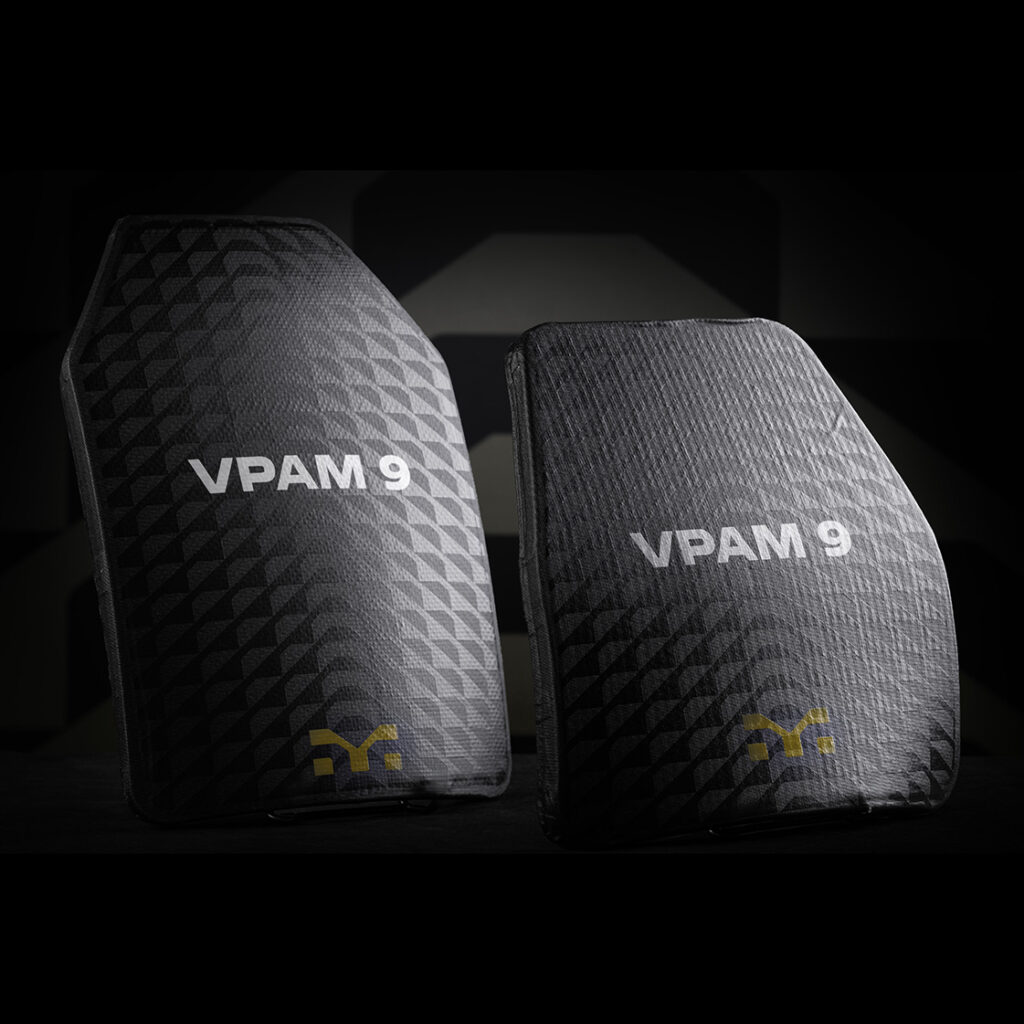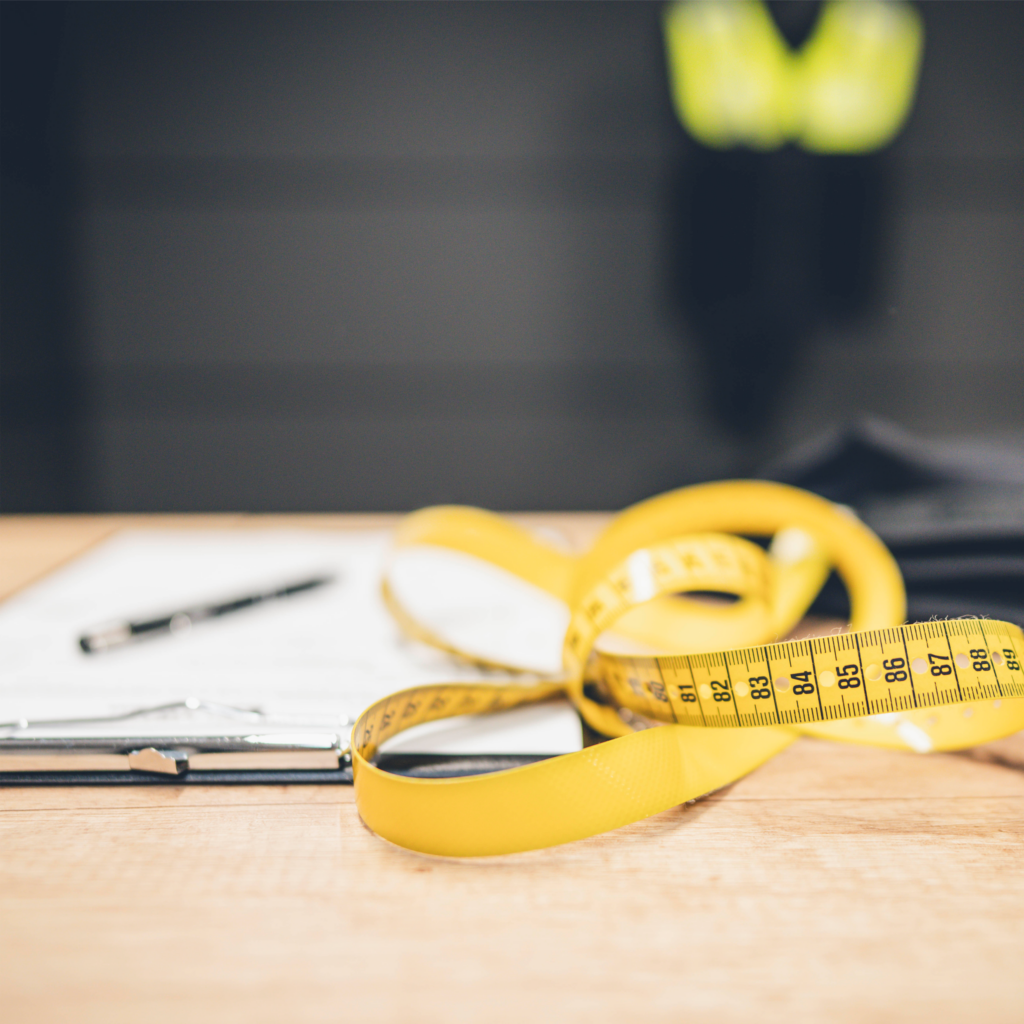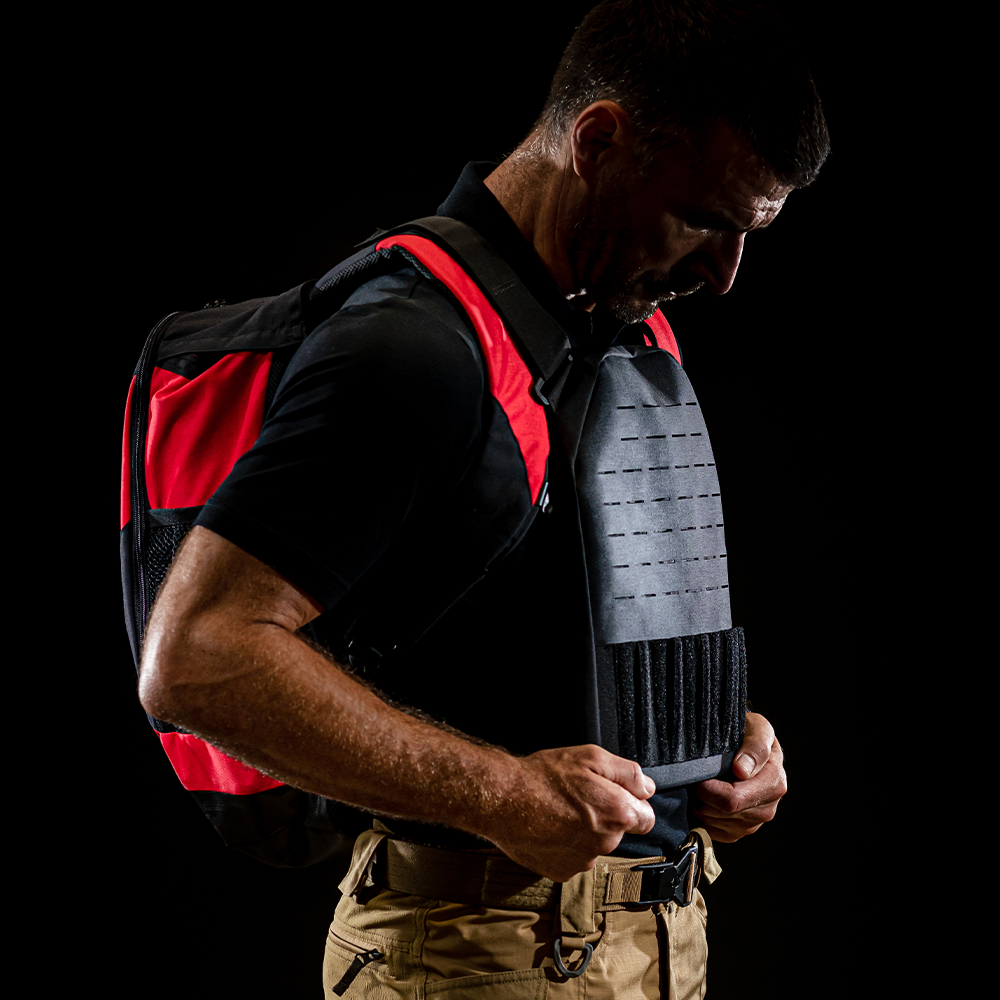
Ballistic protection levels explained – NIJ
Personal protection—and, especially, the topic of protective vests—is becoming more and more important. However, not all protective vests are the same. Threat levels for ballistic vests are defined according to different standards. In this blog we don’t offer a definition of ballistic but rather address U.S. standard NIJ.
In this blog post:
- Ballistic protection level - NIJ
- Compliance testing program (NIJ CTP)
- NIJ body armour ballistic levels - NIJ Standard 0101.06
- What is level NIJ IIA (9 MM and .40 S&W)?
- What is level NIJ II (9 MM and .357 magnum)?
- What is level NIJ IIIA (.357 SIG and .44 magnum)?
- What is level NIJ III (Rifle Ammunition)?
- What is level NIJ IV (Rifle Armour Piercing Ammunition)?
- Protective surfaces
- Summary
Ballistic protection level - NIJ
NIJ (short for National Institute of Justice) is the research, development, and evaluation agency of the U.S. Department of Justice (DoJ). The NIJ is focused on the development of technology for application in the criminal justice system. Its goal is to improve the operation of law enforcement, corrections facilities, forensics, and court processes. NIJ also conducts research in the areas of criminology and criminal justice.
NIJ sets standards for various types of protection and communications equipment used by law enforcement agencies. The agency also sets and maintains standards for body armour.
For more informations about NIJ, please visit the official website.
Compliance testing program (NIJ CTP)
The NIJ conducts independent testing of body armour (bullet-resistant clothing and bulletproof material) to ensure that ballistics products sold on the market can stop bullets as promised. These independent tests are important because they align manufacturers and brands that otherwise would rely on their own standards. The result of NIJ testing is a body armour rating system that lets consumers reliably compare and contrast products across brands.
To ensure that products made of bullet-resistant material and sold as body armour meet the highest standards, the NIJ created the Compliance Testing Program (NIJ CTP) which is administered by the U.S. Department of Justice. NIJ product testing occurs at independent laboratories accredited by the U.S. Department of Commerce’s National Institute of Standards and Technology (NIST) and that meet the objectivity standards established by the NIJ as well as by the International Organisation for Standardisation (ISO) and the International Electrotechnical Commission (IEC). Owing to this accredited independence, the testing labs are free of conflicts of interest even when manufacturers and suppliers use the labs‘ services to evaluate products submitted for certification testing.
NIJ body armour ballistic levels - NIJ Standard 0101.06
The five ballistic protection levels explained in this post are, according to NIJ body armour standard 0101.06, categorised by threat. Which ballistic products occupy what protection levels depends on the type and velocity of the projectile they can resist. These are Level IIA, Level II, Level IIIA, Level III, and Level IV. The body armour performance standards help users better understand how much protection they can expect from the body armour they have chosen to wear.

What is level NIJ IIA (9 MM and .40 S&W)?
Level NIJ IIA is a minimum standard for bulletproof vests. It is often the standard applied in the production of soft body armour made up of layers of high-strength fibres. Examples of these fibres include para-aramid (Kevlar, Twaron) and high-performance polyethylene (Spectra, Dyneema)—for more information about these two bullet-resistant materials, please read our previous blog article.
Compared to level NIJ II, vests rated NIJ IIA are lightweight and flexible. Because they are easily concealable under clothes, NIJ IIA vests are well-suited for day-to-day civilian and law-enforcement use. However, NIJ levels IIA and IIIA offer no protection against rifle ammunition, only some handgun rounds.
New, unworn NIJ IIA-rated body armour must be capable of resisting:
- 9 mm Full Metal Jacket Round Nose projectiles with a velocity of 1,225 feet per second (373 meters/second) and 124 gr (8.0 g)
- .40 Smith & Wesson Full Metal Jacket projectiles with a velocity of 1,155 feet per second (352 meters/second) and 180 gr (11.7 g)
Conditioned NIJ IIA-rated body armour must be capable of resisting:*
- 9 mm Full Metal Jacket Round Nose projectiles with a velocity of 1,165 feet per second (355 meters/second) and 124 gr (8.0 g)
- .40 Smith & Wesson Full Metal Jacket projectiles with a velocity of 1,065 feet per second (325 meters/second) and 180 gr (11.7 g)
9 mm and .40 Smith & Wesson handgun ammunition is currently among the most widely available.
What is level NIJ II (9 MM and .357 magnum)?
Level NIJ II body armour is also referred to as soft armour. It offers more blunt-force protection than does level IIA and can resist a larger variety of ammunition types. NIJ II is heavier than NIJ IIA, although overall it’s still relatively light and flexible—which is why NIJ II is increasingly obsoleting NIJ IIA when it comes to the manufacture of concealable vests.
New, unworn NIJ II-rated body armour must be capable of resisting:
- 9 mm Full Metal Jacket Round Nose projectiles with a velocity of 1,305 feet per second (398 meters/second) and 124 gr (8.0 g)
- ..357 Magnum Jacketed Soft Point projectiles with a velocity of 1,430 feet per second (436 meters/second) and 158 gr (10.2 g)
Conditioned NIJ II-rated body armour must be capable of resisting:*
- 9 mm Full Metal Jacket projectiles with a velocity of 1,245 feet per second (379 meters/second) and 124 gr (8.0 g)
- .357 Magnum Jacketed Soft Point projectiles with a velocity of 1,340 feet per second (408 meters/second) and 158 gr (10.2 g)
What is level NIJ IIIA (.357 SIG and .44 magnum)?
NIJ IIIA is the most common soft-body armour protection level. It provides protection against almost all common handgun rounds. NIJ IIIA body armour is considerably heavier than NIJ IIA- and NIJ II-rated products.
New, unworn NIJ IIIA-rated body armour must be capable of resisting:
- .357 SIG FMJ Flat Nose (FN) projectiles with a velocity of 1,470 feet per second (448 meters/second) and 125 gr (8.1 g)
- .44 Magnum Semi Jacketed Hollow Point (SJHP) projectiles with a velocity of 1,430 feet per second (436 meters/second) and 240 gr (15.6 g)
Conditioned NIJ IIIA-rated body armour must be capable of resisting:*
- .357 SIG FMJ FN projectiles with a velocity of 1,410 feet per second (430 meters/second) and 125 gr (8.1 g)
- .44 Magnum Semi Jacketed Hollow Point (SJHP) projectile with a velocity of 1,340 feet per second (408 meters/second) and 240 gr (15.6 g)
What is level NIJ III (Rifle Ammunition)?
NIJ III is perhaps the most familiar body armour type. It is starting standard level for rifle round protection and stops all handgun caliber rounds. Consisting mainly of hard armour-plate inserts, NIJ III protects against all low-rated body armour threats.
Body armour in this category can be bulky but also lightweight depending on the material used.
Conditioned NIJ III-rated body armour must be capable of resisting:*
- 7,62mm NATO FMJ steel-jacketed projectiles with a velocity of 2,780 feet per second (847 meters/second) and 147 gr (9.6 g)
What is level NIJ IV (Rifle Armour Piercing Ammunition)?
NIJ IV is the highest-rated level of protection, capable of resisting armour-piercing rifle bullets. Body armour in this category is the heaviest on the market and therefore not as comfortable as lower-rated products. It’s also more expensive than NIJ levels IIA, II, IIIA and III.
Conditioned NIJ IV-rated body armour must be capable of resisting:*
- .30 Caliber M2 armour-piercing (AP) projectiles with a velocity of 2,880 feet per second (878 meters/second) and 166 gr (10.8 g)
Protective surfaces
Full certification in accordance with the NIJ 0101.06 standard offers the unrestricted spectrum of sizes. On the other hand, a limited certification, even in conformity with the standard, cannot offer the full range of sizes.
Summary
To summarise, each NIJ body armour level is meant to match a specific need or situation.
- NIJ levels II and IIA provide protection against most common handguns. They’re comfortable due to their lower weight and lack of bulkiness.
- In contrast, NIJ IIIA-rated ballistic products protect against almost all common handgun rounds and is considerably heavier than NIJ IIA and NIJ II products.
- Body armour in level NIJ IIA, II and IIIA is defined as soft armour while NIJ level III and IV represent the hard armour or plate inserts.
- NIJ III and NIJ IV provide more protection than NIJ IIIA, IIA and II. NIJ III stops rifle ammunition and all handgun caliber rounds. In contrast, NIJ IV protects against armour-piercing rifle bullets. NIJ III and NIJ IV can be bulky and less comfortable than soft-armour products.
- Conditioned = loading process in laboratory under the influence of mechanical stress with simultaneous exposure to elevated temperature as well as humidity.
More about our ballistic.

